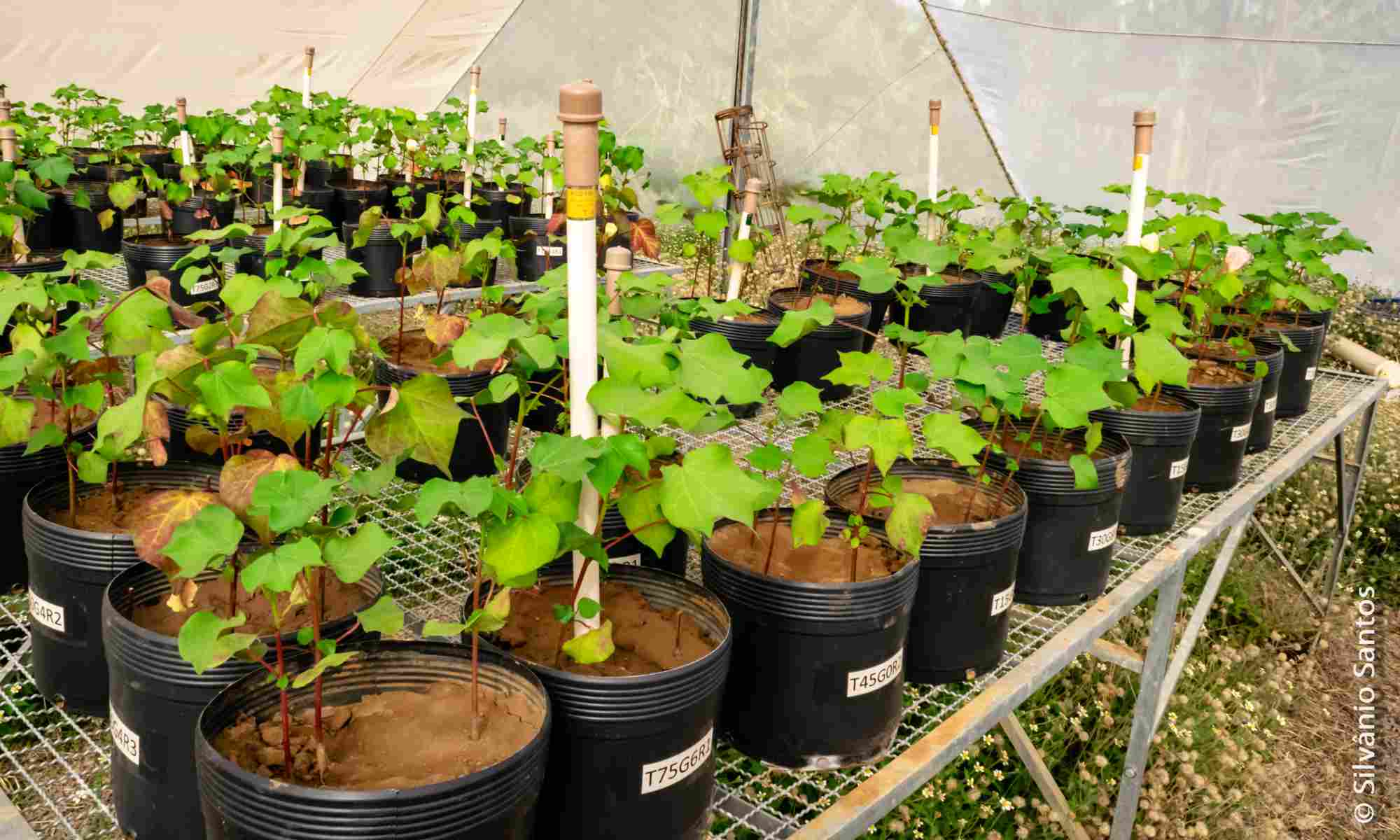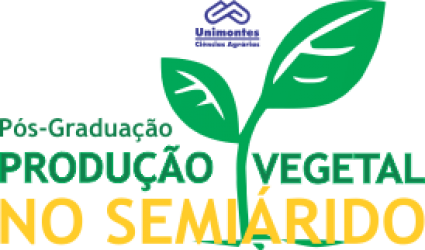- Version
- Download 10
- Tamanho do Arquivo 1.42 MB
- Data de Criação 14/06/2021
- Download
SALES, Rafael Pereira. Diagnose nutricional da mangueira 'Palmer' e modelagem da produção no semiárido. 2019. 63 p. Tese (Doutorado em Produção Vegetal no Semiárido) – Universidade Estadual de Montes Claros, Janaúba, 2019.
No primeiro capítulo objetivou-se determinar valores de referência DRIS e CND para interpretação de resultados de análises foliares da mangueira ‘Palmer’, estabelecendo faixas adequadas de nutrientes para a cultura. No segundo capítulo, foi avaliado o potencial das redes neurais artificiais (RNA) e regressão linear múltipla (RLM) para predizer a produtividade de manga ‘Palmer’ e determinar as variáveis de maior impacto na produção. O trabalho foi realizado nos perímetros de irrigação do Projeto Gorutuba (Janaúba e Nova Porteirinha) e Projeto Jaíba (Jaíba e Matias Cardoso), no semiárido Norte Mineiro. Foram selecionados 98 talhões de 23 propriedades produtoras de manga ‘Palmer’, sendo, 49 talhões em três safras (2015, 2016, 2017) e os demais 49 talhões em duas safras (2016, 2017), totalizando 245 amostras. Cada amostra foi composta por informações de análises foliares (N, P, K, S, Ca, Mg, Cu, Zn, Fe, Mn e B) usadas no primeiro capítulo e mais 36 variáveis relacionadas ao clima, solo, manejo e estado nutricional, além do percentual de floração de 40 talhões, utilizadas no segundo capítulo. No desenvolvimento dos padrões de referência (capítulo 1), as amostras foram divididas quanto à produtividade em duas subpopulações, de alta produtividade (> 30 Mg ha-1) e baixa produtividade (≤ 30 Mg ha-1). Foram calculados os índices DRIS e CND, determinando-se o nível crítico pela distribuição normal. A partir desses valores, foram calculados o Índice de Balanço Nutricional (IBN) e o Índice de Balanço Nutricional médio (IBNm), determinadas as faixas de Beaufils e classificados os nutrientes quanto à limitação e resposta à adubação. Os métodos DRIS e CND são igualmente eficientes para diagnose nutricional da mangueira ‘Palmer’. As faixas adequadas para essa cultivar no semiárido provenientes dos índices DRIS são: 1,50-1,77 (N); 0,10-0,12 (P); 0,93-1,19 (K); 2,34-3,73 (Ca); 0,20-0,27 (Mg); 0,13-0,17 (S) dag kg-1 para os macronutrientes; e 15-46 (Cu); 77-154 (Fe); 24-48 (Zn); 931-2985 (Mn) e 49-83 (B) mg kg-1 para os micronutrientes. O B, seguido pelo Cu foram os principais nutrientes limitadores da produção por deficiência e, o Ca, P e N, foram os principais limitantes da produção por excesso, na população de baixa produtividade, identificados tanto pelo método DRIS como CND. No capítulo 2, as 36 variáveis foram: dados climáticos no momento da indução floral (temperatura máxima - Tmax, temperatura média – Tmed, temperatura mínima - Tmin, horas de irradiação solar - ins, evapotranspiração - Eto, umidade relativa - UR e velocidade do vento - Vv); atributos químicos do solo (pH, MO, P, K, Ca, Mg, SB, Al, H+Al, t, T, V, m, Cu, Fe, Zn, Mn, B e Prem); atributos relacionados ao manejo: nível tecnológico – NT (1 - baixo, 2 - médio e 3 - alto), coeficiente de uniformidade de distribuição da irrigação - Cud, água de irrigação - Ai (1 – poço, 2 – irrigação, 3 - mista), número de plantas por hectare - Pltha, diâmetro médio de copa em metros - DmC, área de copa por hectare em m -2 ha - AC, última dose do regulador de crescimento utilizada em gramas de ingrediente ativo por metro de diâmetro de copa - Dr), mês de indução floral (1 a 10, iniciando contagem em outubro – início da indução do ano safra na região), estado nutricional da área (índice de balanço nutricional médio calculado pelo método DRIS – dIBN e índice de balanço nutricional médio calculado pelo método CND – cIBN), e a produtividade (Mgha-1 ). Os dados foram submetidos à análise por Redes Neurais Artificiais (RNA) e Regressão Linear Múltipla (RLM), para determinação de modelos de predição, e foram selecionadas as variáveis de maior importância relativa pelo teste de Garson. Para o percentual de floração, foi ajustado um modelo matemático em função da temperatura média (Tmed). Foram ajustadas RNAs com coeficiente de determinação (R2) de 84,9% utilizando-se todas as variáveis para predição e 87,02% utilizando-se apenas as sete variáveis de maior importância relativa. Já para as RLM, o R2 foi de 81,40%. As variáveis de maior importância relativa foram: temperatura média, temperatura máxima, diâmetro de copa, índice de balanço nutricional médio CND, área de copa, dose de paclobutrazol e nível tecnológico. O modelo ajustado para porcentagem de floração em função da Tmed foi o quadrático com R2 de 94,12%, onde a temperatura limite para indução floral com resposta de 70% de floração foi 29,4°C.
Palavras-chave: Mangifera indica L., redes neurais artificiais, floração.
Nutritional diagnosis and modeling of ‘Palmer’ mango yield in the semi-arid
The first chapter aimed to determine reference values DRIS and CND to the interpretation of the results of ‘Palmer’ mango tree leaf tissue analysis, establishing adequate nutrient ranges for the cultivation. The second chapter was measured the artificial neural networks (ANN) and multiple linear regression (MLR) potential to predict the ‘Palmer’ mango yield and determine the variables with the greatest impact on fruit yield. The work was accomplished on the irrigation district of the Gorutuba Project (Janaúba and Nova Porteirinha counties) and Jaíba Projects (Jaíba and Matias Cardoso counties), in the semi-arid region of Minas Gerais, Brazil. Ninety-eight plots of 23 ‘Palmer’ mango farm were selected, being, 49 plots in three harvests (2015, 2016, 2017) and the other 49 plots in two harvests (2016, 2017), totalizing 245 samples. Each sample was composed by leaf tissue analysis (N, P, K, S, Ca, Mg, Cu, Zn, Fe, Mn and B) used on the first chapter and more 36 variables related to weather, soil, handling and nutritional status, besides the flowering percentage of 40 plots, used on the second chapter. In the reference standards reference development (chapter 1), the samples were divided as to yield into two subpopulations, high yield (>30 Mg ha-1 ) and low yield (≤ 30 Mg ha-1 ). The DRIS and CND indexes were calculated, determining the critical level by the normal distribution. From these values, the Nutritional Balance Index (NBI) and the Mean Nutritional Balance Index (NBIm) were calculated, determined the Beaufils ranges and classified the nutrients as to limitation and fertilization response. The DRIS and CND methods are equally efficient to ‘Palmer’ mango tree nutritional diagnosis. The adequate ranges to cultivate it on the semi-arid from DRIS indexes are: : 1,50-1,77 (N); 0,10-0,12 (P); 0,93-1,19 (K); 2,34-3,73 (Ca); 0,20-0,27 (Mg); 0,13-0,17 (S) dag kg-1 to macronutrients; and 15-46 (Cu); 77-154 (Fe); 24-48 (Zn); 931-2985 (Mn) and 49-83 (B) mg kg-1 to micronutrients. The B, followed by Cu was the main yield limiting nutrients by deficiency and, the Ca and N, were the main yield limiters by excess, on low yield population, identified by the DRIS method as CND. On chapter 2 the 36 variables were: climatic data at the time of floral induction (maximum temperature, average temperature, minimum temperature, hourly solar radiation, evapotranspiration, relative humidity and wind velocity); soil chemicals (pH, MO, P, K, Ca, Mg, SB, Al, H+Al, t, T, V, m, Cu, Fe, Zn, Mn, B and Prem); handling related attributes: technological level (1 – low, 2 – medium and 3 - high), uniformity coefficient of irrigation distribution, irrigation water (1 – well, 2 – irrigation, 3 - mixed), number of plants by hectare, mean canopy diameter in meters, canopy area by hectare in m -2 ha, last growth regulator dose used in grams of active ingredient per canopy diameter, floral induction month (1 to 10, initiating count in October – start of harvest year induction in the region), area nutritional status (mean nutritional balance index calculated by the DRIS – dNBI method and mean nutritional balance index calculated by the CND – cNBI method), and yield (Mg ha-1 ). The data were submitted to analysis by ANN and MLR, for prediction models determination, and were selected the most relative variables importance by the Garson test. For the flowering percentage, a mathematical model in function of average temperature were adjusted. ANNs with 84.9% determination coefficient (R2) were adjusted using all of the variables to prediction and 87.02% using just the seven variables of most relative importance. Now, for the MLR, the R2 was 81.40%. The most relative variables importance were: mean temperature, maximum temperature, canopy diameter, CND mean nutritional balance index, canopy area, paclobutrazol dose, and technological level. The quadratic model for flowering percentage in the function of the average temperature showed 94.12% of R2, where the upper limit of temperature for floral induction with 70% of the flowering response was 29.4°C.
Keywords: Mangifera indica L., artificial neural networks, flowering

